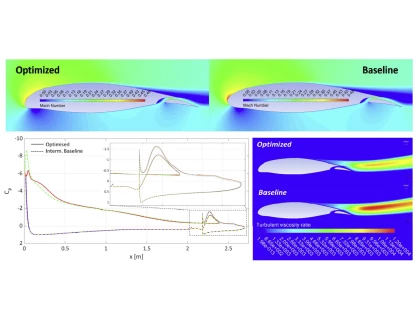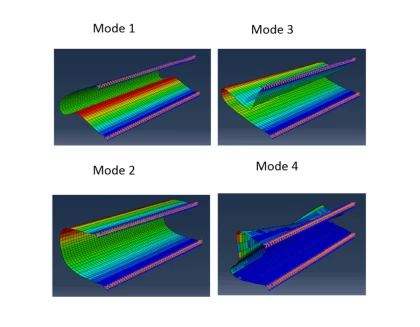
Background
Morphing wings are one of the most promising enabling technologies for enhancing aircraft efficiency, since they make it possible to adapt the wing shape for several flight conditions encountered in a typical mission profile, thus enabling better aerodynamic performance throughout the whole flight and reducing fuel consumption.
In traditional aircraft design, aerodynamic and structural aspects are usually handled separately, and the design is iterated until an optimum is converged upon. On the contrary, morphing aircraft requires a tighter integration to ensure that the optimal aerodynamic shapes can be achieved by realistic morphing systems and structures. This is a problem that does not appear to be commonly addressed. In fact, there is plenty of research works where an aerodynamic analysis is first performed at different flight conditions, and then a morphing mechanism is produced that can deform the structure to match those desired shapes. However, the accuracy to which the external shape can be matched clearly depends upon the complexity and number of degrees of freedom of the system. A very simple mechanism may only match the target shapes very approximately, whilst a more complex system will match the shapes more accurately, but come at the cost of increased weight and complexity.
In this context, a Multi-Disciplinary Optimization (MDO) approach, based on the integration of Computational Fluid Dynamics (CFD) and computational structural dynamics for geometric optimization, appears as a promising alternative to the more traditional sequential design methodologies for morphing wings. However, this integrated approach requires multi-disciplinary thinking since the very early stages of aircraft development, which significantly increases the overall complexity even in the preliminary design phase.
Strategy
The OPTIMOrph project addressed the challenges inherent to the development of an integrated aerodynamics/structural optimization methodology where also the morphing constraints/capabilities of the selected concepts and materials are inherently included in the process. Specifically, a methodology was implemented in which, rather than performing an aerodynamic optimization and then designing a morphing system to obtain the required shape-change, the morphing system capabilities and limitations are explicitly accounted for within the optimiser.
More precisely, an innovative design optimization strategy based on the in-house optimization tool GeDEA was developed, able to find optimized target shapes which can assuredly be created by morphing starting from the baseline shape and the selected materials. In particular, a two-way coupling was implemented, as 1) structural constraints were included in the aerodynamic optimisation to promote structural feasibility, and 2) aerodynamic loads were applied to structural individuals to obtain a closer match with aerodynamic target shapes.
Outcomes
A high-lift condition and a cruise condition were identified as conditions of interest for a multi-objective, multi-point optimization, but they can easily be changed since the developed methodology is very general.
Objectives at high-lift conditions were the maximisation of the maximum lift coefficient and the simultaneous maximisation of aerodynamic efficiency L/D at 70% of maximum CL. Maximisation of L/D ratio at fixed angle of attack was selected as objective for the cruise condition. The morphing region was set between 0% and 15% of the airfoil chord.
The aerodynamic optimization at high lift conditions provided a 3% increase in CL,max and simultaneous 0.5% increase in L/D at 0.7*CL,max with respect to a reference airfoil featuring droop nose and a trailing edge flap. At cruise conditions, a 2.7% increase in L/D and simultaneous 2.4% increase in CL was achieved using the same morphing mechanism.
Regarding the structural part of the methodology, a two level optimization was implemented, in which the first level was employed to find the optimal stiffness distribution matching the aerodynamic target shapes, while in the second level the optimal stiffness was achieved using practical structural components, including a variable stiffness composite, obtained by changing the lamina angles. Also the composite joints used in the leading edge structure, which stiffen the structure, and transfer the actuation forces onto the skin, were modelled to predict the distribution of the interlaminar stress. The results from optimization proved that a single target shape can be achieved with good accuracy from its baseline shape and also an approach to reach two different target shapes was demonstrated on a number of test points.
Duration: Duration: June 2017- May 2019
This project has received funding from the Clean Sky 2 Joint Undertaking (JU) under grant agreement No. 755068






